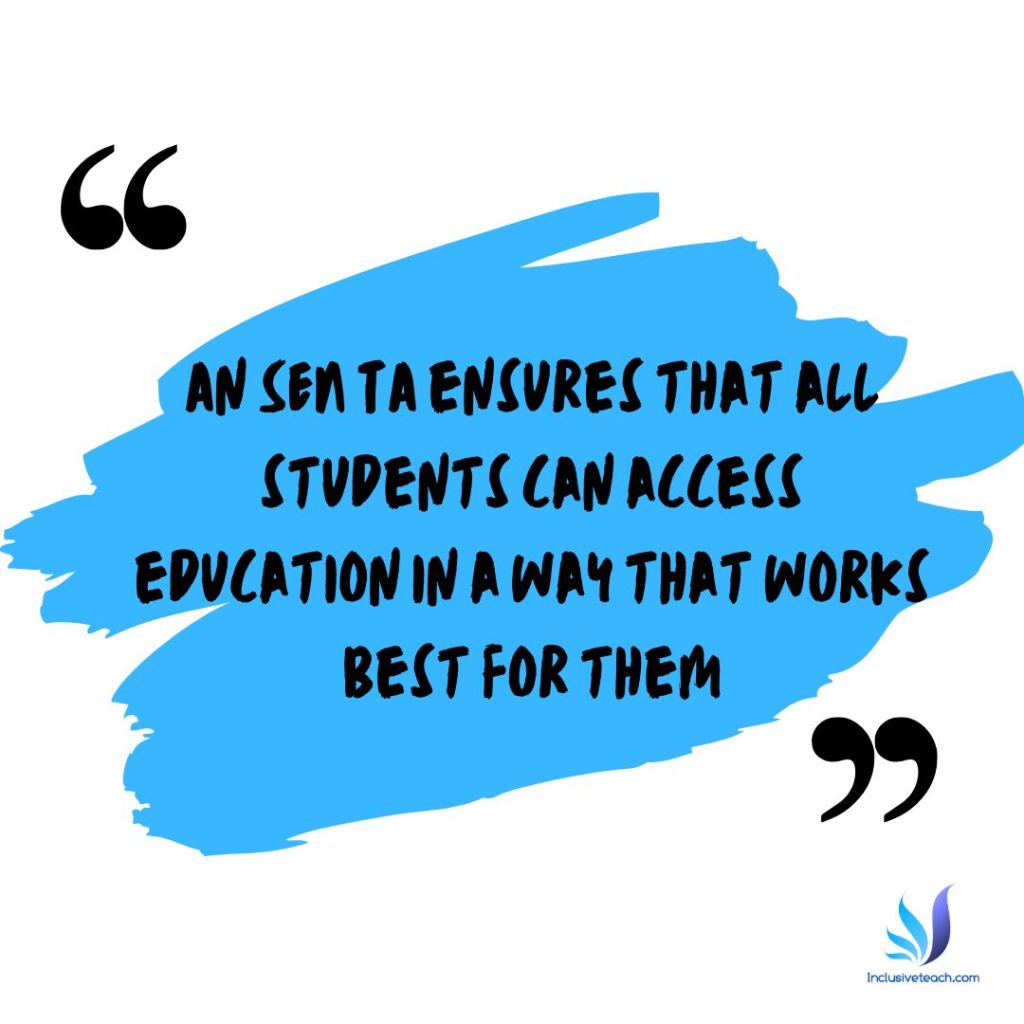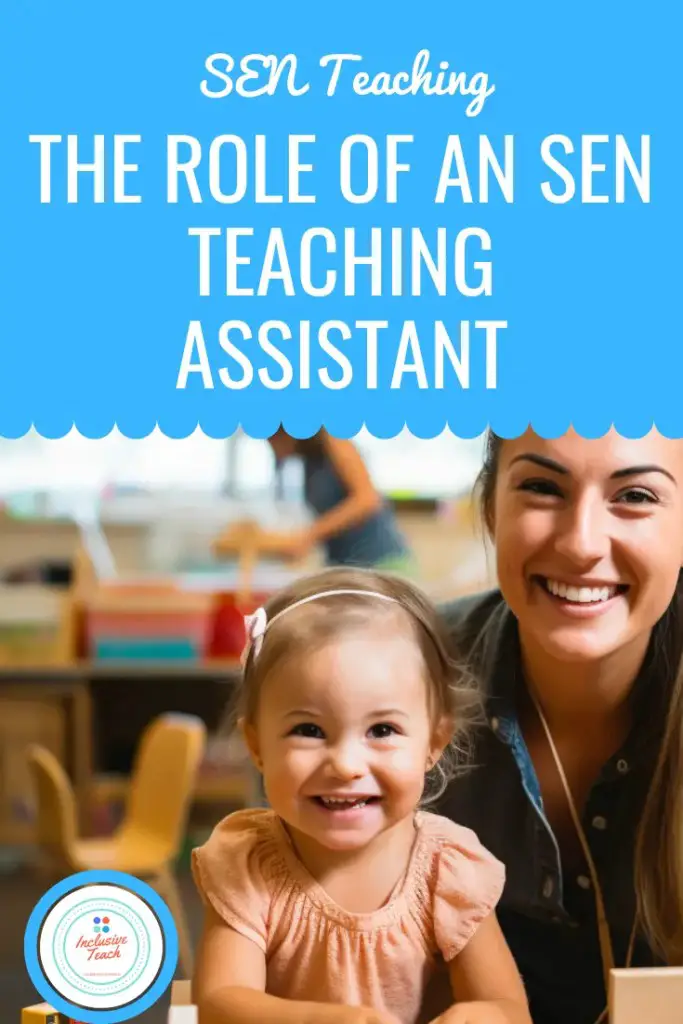The Role of an SEN Teaching Assistant
The Role of an SEN TA in the U.K. Education System
Special Educational Needs Teaching Assistants (SEN TAs), also known as Special Needs Assistants or Learning Support Assistants, play a crucial role in the U.K. education system. They provide support to children with a range of needs, ensuring that all students can access education in a way that works best for them. This article will explore the responsibilities, skills required, and the impact of an SEN TA.
This article forms part of our series on teaching assistants.
What is an SEN Teaching Assistant?
An SEN TA is a teaching assistant who specialises in supporting children with special educational needs (SEN). These may include children with physical disabilities, learning difficulties, emotional and behavioural difficulties, or sensory impairments. The SEN TA’s main role is to provide additional support to these students, enabling them to participate fully in educational activities and achieve their potential.

Role and Responsibilities of a TA
The responsibilities of an SEN TA can vary greatly depending on the specific needs of the children they are supporting. However, some common tasks include:
- Supporting Learning: SEN TAs work closely with the classroom teacher to adapt learning materials to the student’s needs. They may provide additional explanations, simplify tasks, or use alternative teaching methods.
- Behaviour Management: Some students may have behavioural difficulties related to their special educational needs. SEN TAs help manage this behaviour, implementing strategies to promote positive behaviour and reduce disruptions.
- Physical and Medical Assistance: For students with physical disabilities, SEN TAs may provide help with mobility, feeding, personal hygiene, and other daily tasks including medication.
- Emotional Support: SEN TAs also provide emotional support to students. They help students build confidence, develop social skills, manage stress, and cope with any challenges related to their special educational needs.
- Liaison with Other Professionals: SEN TAs often work as part of a larger team, which might include speech and language therapists, educational psychologists, and social workers. They act as a liaison between these professionals, the school, and the student’s family to ensure the child’s needs are met.
How can a teaching assistant support a child with special needs?
Here are some ways a teaching assistant can support a child with special educational needs:
- Provide one-on-one support to help the child stay on task, understand instructions, and complete activities. This could involve sitting next to the student, redirecting their attention, or modifying instructions.
- Implement adaptations and accommodations outlined in the child’s Individualised Education Program (IEP) or EHC plan. This may include allowing extra time, modifying tests, providing adapted resources, etc.
- Collaborate with the lead teacher to adjust lesson plans and assignments to the child’s learning needs and abilities. This can mean simplifying instructions, reducing workload, or providing alternative activities or materials.
- Help the child work on goals and skills specified in their IEP, such as social skills, organization, reading comprehension, etc.
- Assist the child with transitions between activities, settings, or classes as needed.
- Promote participation and interaction with peers through modeling, facilitation, and social skills instruction.
- Use positive reinforcement techniques to motivate and encourage the child.
- Monitor the child’s behaviour and assist with de-escalation techniques if challenging behaviors occur.
- Provide personal care assistance if this is indicated in the IEP for disabilities that affect the child’s self-care abilities.
- Maintain clear communication with lead teacher and parents regarding the child’s progress, strengths, areas of difficulty, etc.
The key is providing tailored support while also promoting the child’s independence and inclusion. With the proper training on the child’s needs, a teaching assistant can have a huge positive impact.
Skills and Qualifications
SEN TAs require a range of skills and qualifications to effectively support students. These include:
- Patience and Resilience: Working with students with special needs can be challenging and requires patience and resilience.
- Communication Skills: SEN TAs need excellent communication skills to effectively liaise with teachers, parents, and other professionals. They also need these skills to adapt their communication style to suit the needs of the children they’re working with.
- Creativity: Finding new ways to engage students and adapt learning materials requires creativity.
In terms of qualifications, SEN TAs typically need a minimum of GCSEs in English and Mathematics. However, many also have further qualifications such as NVQs or BTECs in Supporting Teaching and Learning, or specific qualifications related to special educational needs.
Impact
SEN TAs make a substantial difference to the lives of students with special educational needs. Their support enables these students to access education in a way that suits their needs, helping to promote inclusivity and equality within the education system. They also assist teachers by providing targeted support, allowing teachers to focus on the class as a whole.How to Become a Teaching Assistant
Are you passionate about education and interested in supporting teachers in the classroom? Becoming a teaching assistant can be a rewarding career choice, allowing you to make a positive impact on the lives of students. In this article, we will guide you through the steps to become a teaching assistant, including the necessary qualifications, skills, and experience required for this role.
How Do I Become an SEN Teaching Assistant?
Understand the Role of a Teaching Assistant
Before embarking on a career as a teaching assistant, it is important to understand the responsibilities and expectations of the role. Teaching assistants work closely with teachers to provide support in the classroom, helping to create a positive and productive learning environment. Their tasks may include assisting with lesson planning, preparing teaching materials, supervising students, and providing individualized support to students who may need extra help.
Obtain the Basic Qualifications
While the specific qualifications needed to become a teaching assistant may vary depending on the education system and institution, most employers require a minimum of a high school diploma or equivalent. However, having a relevant qualification such as a certificate or diploma in education or child development can greatly enhance your job prospects.
Consider enrolling in a recognized teaching assistant program, which typically covers topics such as child development, classroom management, and educational theories. These programs provide you with the knowledge and skills necessary to excel in your role as a teaching assistant.
Develop Key Skills
To become an effective teaching assistant, there are certain skills that are highly valued in this profession. These skills include:
Communication Skills
Strong communication skills are essential for effectively interacting with both students and teachers. As a teaching assistant, you will need to communicate clearly and professionally with students to provide instructions and offer support.
Organisational Skills
Being organized is crucial in managing classroom materials, assisting with lesson preparation, and keeping track of student progress. Develop your organizational skills by creating systems to stay on top of tasks and responsibilities.
Patience and Empathy
Working with students of varying abilities and backgrounds requires patience and empathy. Understanding the individual needs of students and providing support in a compassionate manner is key to fostering a positive learning environment.
Flexibility and Adaptability
Classroom dynamics can change rapidly, and as a teaching assistant, you need to be flexible and adaptable to meet the evolving needs of students and teachers. Being able to adjust your approach and strategies accordingly is essential.
Gain Experience through Volunteering or Internships
To enhance your chances of securing a teaching assistant position, gaining practical experience through volunteering or internships can be invaluable. Many schools or educational institutions offer volunteer opportunities that allow you to work alongside experienced teaching assistants and gain firsthand experience in a classroom setting.
Consider reaching out to local schools, community centers, or educational programs to inquire about any volunteer or internship positions available. This experience will not only strengthen your resume but also provide you with valuable insights into the day-to-day responsibilities of a teaching assistant.
Prepare a Strong Resume and Cover Letter
When applying for teaching assistant positions, it is important to have a well-crafted resume and cover letter that highlight your qualifications, skills, and relevant experience. Tailor your resume to emphasize your educational background, any certifications or training you have completed, and your practical experience.
In your cover letter, explain why you are interested in the role of a teaching assistant and how your skills and experience align with the requirements of the position. Be sure to showcase your passion for education and your commitment to supporting students’ learning journey.
Search and Apply for Teaching Assistant Positions
Once you have prepared your resume and cover letter, it’s time to start searching for teaching assistant positions. Look for job postings on school websites, educational job boards, and local job portals. Additionally, consider networking with educators and professionals in the field who may be aware of job opportunities.
When applying for positions, be sure to follow the application instructions provided and submit all required documents. You may also be required to attend an interview, where you can further demonstrate your suitability for the role.
Continuously Learn and Grow
As a teaching assistant, your learning journey doesn’t stop once you secure a position. It is important to continuously seek opportunities for professional development and stay up-to-date with current educational practices and trends. Attend workshops, seminars, or online courses to enhance your skills and broaden your knowledge base.
Additionally, take advantage of any mentoring or coaching programs offered by your school or educational institution. Learning from experienced teachers and teaching assistants can be invaluable in further developing your abilities in the classroom.
Remember, becoming a teaching assistant is a fulfilling career choice that requires a combination of qualifications, skills, and experience. By following these steps, you can position yourself for success in this rewarding role and make a positive impact on the lives of students. Good luck on your journey to becoming a teaching assistant!








2 Comments